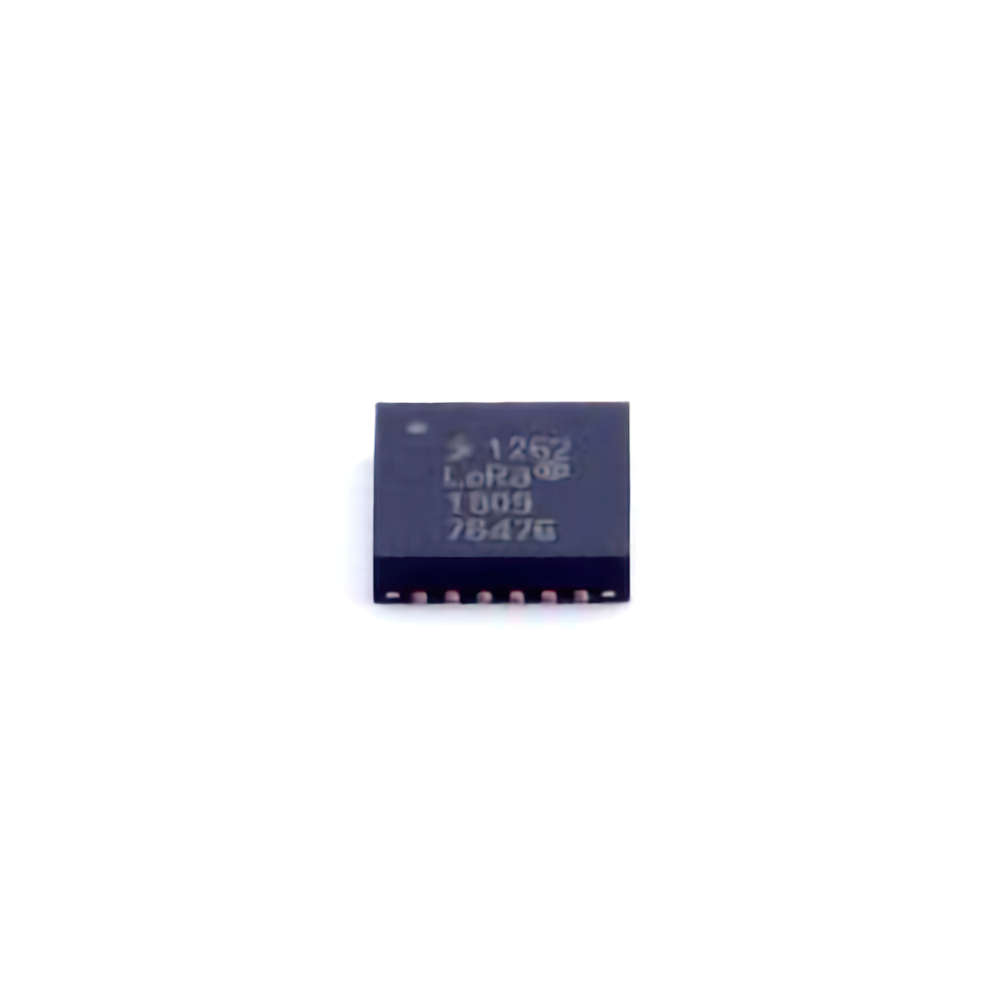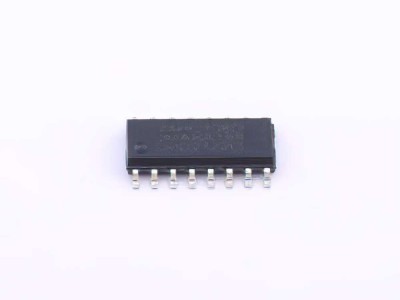
The SX1262IMLTRT is a powe RF ul and efficient transceiver for LoRa-based communication systems, widely used in IoT applications. This article explores the applications of the SX1262IMLTRT in LoRa communication, as well as various optimization strategies to enhance its performance. By delving into its features, capabilities, and optimization techniques, this article provides valuable insights for engineers, developers, and enthusiasts working with LoRa technology.
SX1262IMLTRT, LoRa communication, IoT applications, optimization, transceiver, low- Power communication, long-range communication, wireless communication, RF transceiver, energy efficiency, wireless networks.
Introduction to LoRa and SX1262IMLTRT Transceiver
Long Range (LoRa) is a revolutionary wireless communication technology that has gained massive popularity in the Internet of Things (IoT) domain due to its ability to transmit data over long distances with very low power consumption. One of the key components enabling the success of LoRa networks is the RF transceiver, and the SX1262IMLTRT is one such versatile and efficient transceiver. It is produced by Semtech, a company renowned for its LoRa technology, and is a critical component in LoRa-based communication module s.
The SX1262IMLTRT is designed for low-power, long-range, and robust wireless communication. It operates within the LoRaWAN (Long Range Wide Area Network) protocol, which is commonly used in IoT deployments that require remote sensing, smart cities, agriculture, logistics, and various other applications. The SX1262IMLTRT supports both LoRa modulation and standard GFSK, FSK, and OOK modulations, making it a highly adaptable solution for different wireless communication needs.
Key Features of the SX1262IMLTRT
The SX1262IMLTRT is packed with advanced features that make it an attractive choice for designers of wireless communication systems. Some of its most prominent features include:
Long-range communication: With a range that can exceed several kilometers in open spaces, the SX1262IMLTRT is designed for long-range communication, making it ideal for wide-area networks and remote Sensor deployments.
Low Power Consumption: The device operates with ultra-low power, allowing battery-powered applications to run for extended periods. It is capable of achieving extremely low current consumption in both idle and transmission modes.
Advanced Modulation Schemes: The SX1262IMLTRT supports various modulation schemes, including LoRa, FSK, and GFSK, providing flexibility to adapt to different requirements and regulatory environments.
High Sensitivity: The device offers a high sensitivity of -137 dBm in LoRa mode, which improves its ability to receive weak signals and maintain a stable connection over long distances.
Flexible Data Rates: The SX1262IMLTRT offers a wide range of data rates, enabling it to cater to diverse applications, from low-data-rate sensor networks to higher-speed data transmission requirements.
LoRaWAN Applications
LoRaWAN is the standard for low-power, wide-area networks, and the SX1262IMLTRT is perfectly suited to it. LoRaWAN networks typically serve in areas where long-range connectivity is crucial, and the data traffic is relatively low. Some of the key applications of LoRa-based systems using the SX1262IMLTRT transceiver include:
Smart Agriculture: LoRa enables farmers to monitor soil moisture, weather conditions, and livestock health from remote locations. Sensors in fields can transmit data back to a central hub without the need for an extensive wired infrastructure.
Smart Cities: LoRa devices deployed in urban environments can provide services like street lighting control, waste Management monitoring, and environmental monitoring, all powered by long-range, low-power communication.
Industrial IoT (IIoT): In industrial settings, the SX1262IMLTRT can be used to monitor machinery, track inventory, and ensure asset management over wide areas. Its long-range and low power usage are perfect for factories with large layouts or remote installations.
Asset Tracking: LoRa is ideal for tracking goods, vehicles, or high-value assets. The long-range capabilities of the SX1262IMLTRT ensure real-time data transmission even in challenging environments.
Environmental Monitoring: Sensors for air quality, pollution, and weather conditions often require low-power, long-range communication systems. LoRa's characteristics make it a perfect fit for such applications.
The Importance of Optimization in LoRa Networks
While the SX1262IMLTRT is a highly capable transceiver, to get the most out of LoRa networks, careful optimization is essential. Optimizing the performance of LoRa devices can help extend battery life, improve communication reliability, and maximize network efficiency. In the following section, we will discuss several strategies to optimize the performance of the SX1262IMLTRT in LoRa communication systems.
Optimization Strategies for SX1262IMLTRT
To harness the full potential of the SX1262IMLTRT transceiver, several optimization techniques can be applied. These strategies primarily focus on reducing power consumption, improving range and reliability, and fine-tuning network settings for different application needs.
1. Adjusting Transmission Power Levels
One of the simplest yet most effective ways to optimize LoRa communication is by adjusting the transmission power of the SX1262IMLTRT. LoRa devices operate with adjustable output power, typically ranging from +20 dBm to -9 dBm, depending on the regulatory requirements and the application’s range. By fine-tuning the transmission power, it is possible to find the optimal balance between range and power consumption.
High Power Mode: In scenarios where maximum range is required (e.g., rural IoT deployments or remote environmental monitoring), setting the transmission power to the highest possible level can help ensure reliable communication over long distances.
Low Power Mode: In applications where the network operates in close proximity (e.g., smart homes or industrial sensors), reducing the transmission power can significantly lower power consumption and extend battery life.
2. Optimizing Data Rate and Spreading Factor
The SX1262IMLTRT supports multiple data rates and spreading factors. Adjusting the data rate and spreading factor has a significant impact on both the range and power consumption of the system.
Spreading Factor (SF): LoRa's spreading factor determines the number of chips per symbol, which affects the signal's time on air. A higher spreading factor increases the range and sensitivity of the signal but at the cost of longer transmission times and higher power consumption. In contrast, a lower spreading factor reduces power usage but also limits the range.
For example:
SF7 offers higher data rates but shorter range.
SF12 provides a longer range but slower data rates and higher power consumption.
Optimizing the spreading factor based on the distance between the transmitter and receiver can significantly improve power efficiency and communication quality.
Data Rate: Data rate adjustments impact the transmission time and thus the power consumption. For applications that require transmitting small amounts of data (e.g., sensor readings), selecting a lower data rate can help conserve energy.
3. Duty Cycle Management
LoRa devices typically work in a duty cycle-limited environment to comply with regional regulations (e.g., in Europe, a 1% duty cycle is common). The SX1262IMLTRT allows developers to optimize the duty cycle by reducing the active transmission time, which conserves power and ensures compliance with regulations.
By carefully scheduling transmissions and considering low-duty-cycle operation, the SX1262IMLTRT can efficiently manage its time between sleep, receive, and transmit states. Additionally, duty cycle management plays a role in reducing interference, especially in dense network environments.
4. antenna Design and Placement
The antenna plays a pivotal role in optimizing the range and signal quality of LoRa communication systems. Proper antenna design and placement can significantly enhance the performance of the SX1262IMLTRT. Some factors to consider include:
Antenna Gain: Using high-gain antennas helps improve signal reception and transmission, especially in long-range applications. High-gain antennas focus the signal in a specific direction, improving the overall range.
Antenna Placement: Placing the antenna in a location with minimal obstructions (e.g., avoiding walls and metal structures) will reduce signal attenuation and improve the overall communication range.
5. Channel and Frequency Planning
Another critical aspect of optimization is selecting the appropriate communication channels and frequencies. LoRa operates in various frequency bands (e.g., 433 MHz, 868 MHz, 915 MHz), and choosing the right frequency band for the application is essential for maximizing performance.
Interference Avoidance: In densely populated areas or industrial environments, interference from other wireless systems can degrade LoRa performance. Optimizing the frequency channel by selecting a less congested band or dynamically switching channels based on real-time interference measurements can reduce packet loss and enhance communication reliability.
6. Link Budget and Sensitivity Tuning
A key advantage of the SX1262IMLTRT is its high receiver sensitivity. However, the actual link budget depends on various factors such as antenna performance, transmission power, and the environment. By performing link budget analysis, it is possible to ensure that the receiver sensitivity is appropriately matched to the signal strength, thereby ensuring reliable communication over the required distances.
7. Sleep Modes and Energy Harvesting
The SX1262IMLTRT is designed to operate efficiently in low-power modes. Utilizing the device’s sleep modes optimally can extend the battery life of wireless sensor nodes and IoT devices.
For applications that require even longer battery life, integrating energy harvesting techniques (e.g., solar power) can ensure that the device remains operational without requiring frequent battery changes.
Conclusion
The SX1262IMLTRT is an exceptional choice for low-power, long-range communication applications. Its flexibility, low power consumption, and robust performance make it a key component in the growing ecosystem of LoRa-based solutions. Through careful optimization of transmission power, data rates, antenna placement, duty cycle management, and other parameters, developers can maximize the performance of LoRa networks and improve the efficiency of IoT applications.
As LoRa technology continues to evolve, the SX1262IMLTRT will remain at the forefront of wireless communication, enabling a wide array of IoT solutions that are energy-efficient, reliable, and scalable. By employing the optimization strategies discussed in this article, engineers can enhance the overall performance of their LoRa-based systems, ensuring that they deliver the best possible results in real-world deployments.
If you are looking for more information on commonly used Electronic Components Models or about Electronic Components Product Catalog datasheets, compile all purchasing and CAD information into one place.

